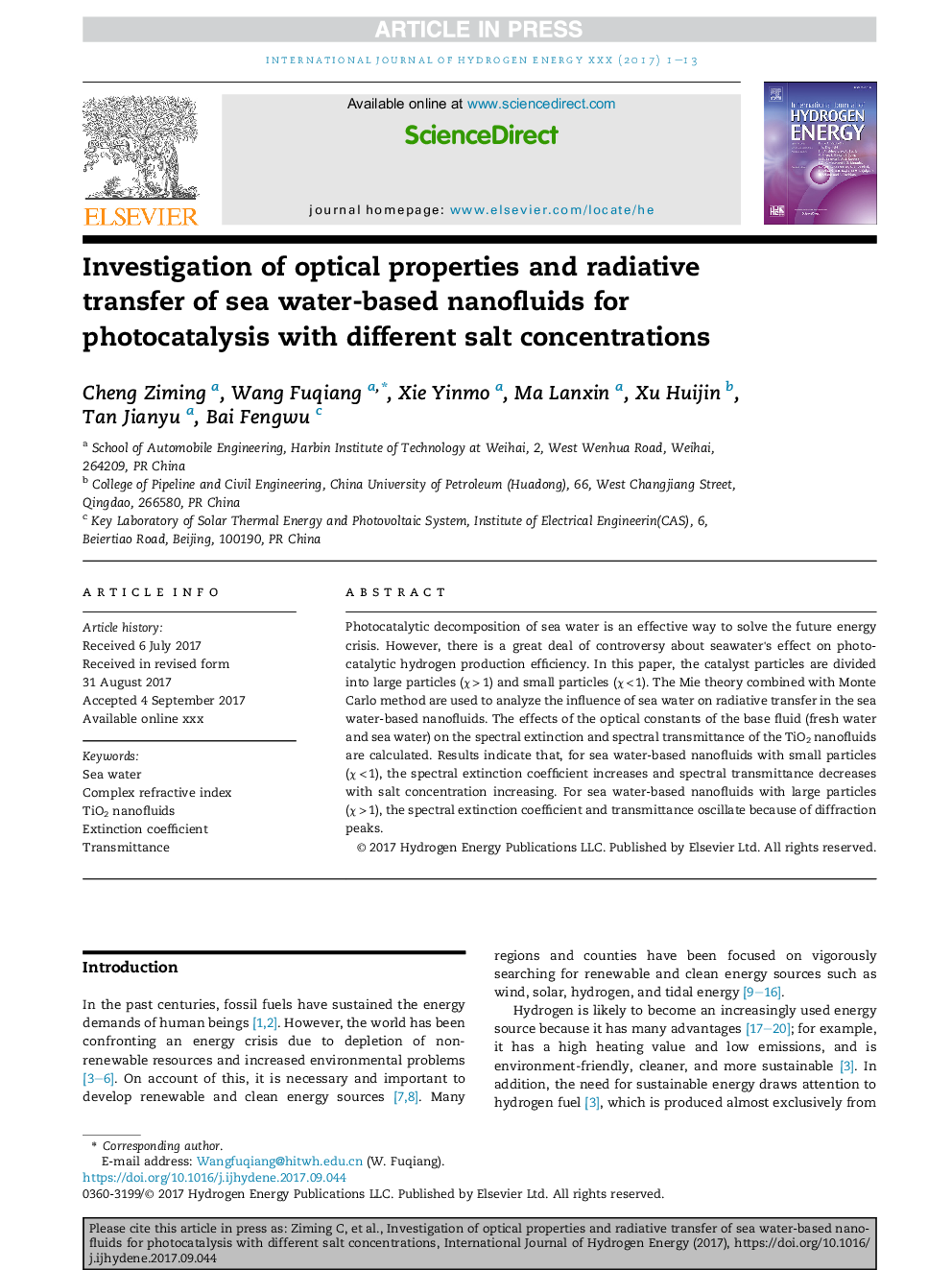| Article ID | Journal | Published Year | Pages | File Type |
|---|---|---|---|---|
| 7709735 | International Journal of Hydrogen Energy | 2017 | 13 Pages |
Abstract
Photocatalytic decomposition of sea water is an effective way to solve the future energy crisis. However, there is a great deal of controversy about seawater's effect on photocatalytic hydrogen production efficiency. In this paper, the catalyst particles are divided into large particles (Ï>1) and small particles (Ï<1). The Mie theory combined with Monte Carlo method are used to analyze the influence of sea water on radiative transfer in the sea water-based nanofluids. The effects of the optical constants of the base fluid (fresh water and sea water) on the spectral extinction and spectral transmittance of the TiO2 nanofluids are calculated. Results indicate that, for sea water-based nanofluids with small particles (Ï<1), the spectral extinction coefficient increases and spectral transmittance decreases with salt concentration increasing. For sea water-based nanofluids with large particles (Ï>1), the spectral extinction coefficient and transmittance oscillate because of diffraction peaks.
Related Topics
Physical Sciences and Engineering
Chemistry
Electrochemistry
Authors
Cheng Ziming, Wang Fuqiang, Xie Yinmo, Ma Lanxin, Xu Huijin, Tan Jianyu, Bai Fengwu,
